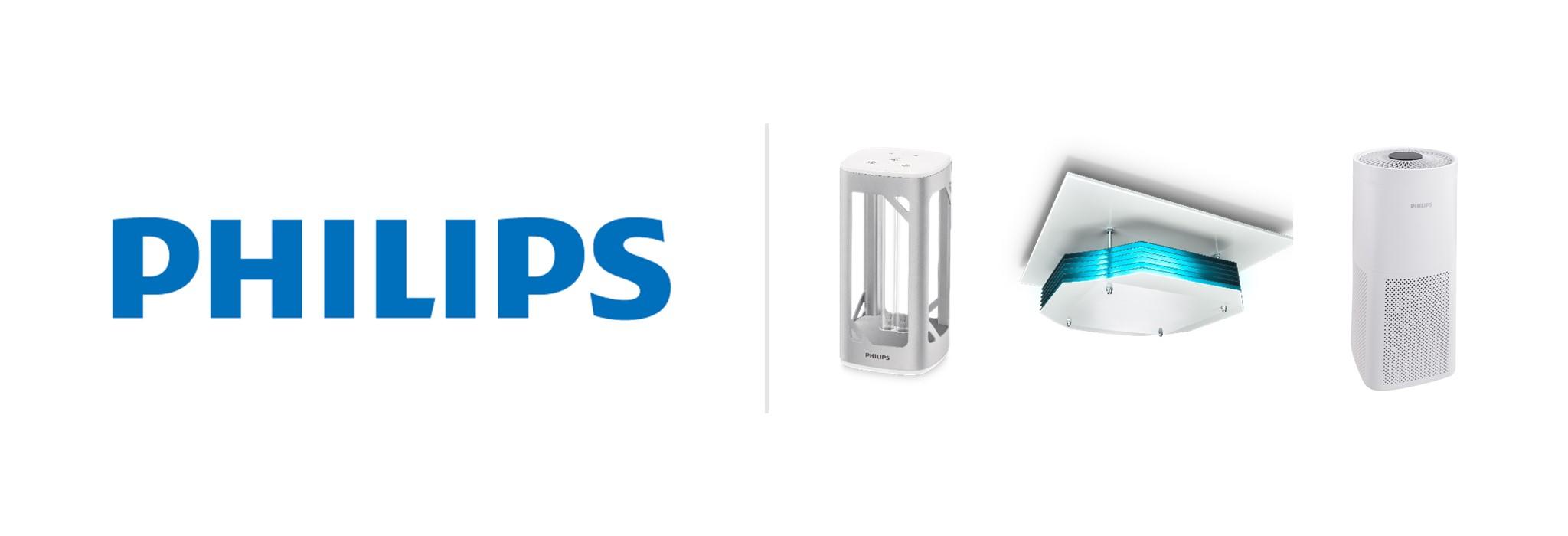
What are UV rays?
With the prevention of the spread of COVID-19 (COVID-19), sterilization and virus inactivation technology by irradiation with ultraviolet (UV-C) is attracting attention.
Ultraviolet rays are rays of 100 to 400 nm that are invisible to the human eye (invisible rays). Solar radiation from the sun is classified into infrared rays, visible rays, and ultraviolet rays according to the length of the wavelength. Ultraviolet rays (UV) can be broadly divided into three types, UV-A, UV-B, and UV-C, in descending order of wavelength.

Sterilize viruses and bacteria with UV-C inactivation ability
UV-C light has the ability to destroy the DNA and RNA of microorganisms (germs, viruses, bacteria, etc.). Philips UV-C rays have a peak wavelength of 253.7nm, and are designed around 265nm, where UV-C's sterilization effect is maximized, so it boasts high sterilization power.
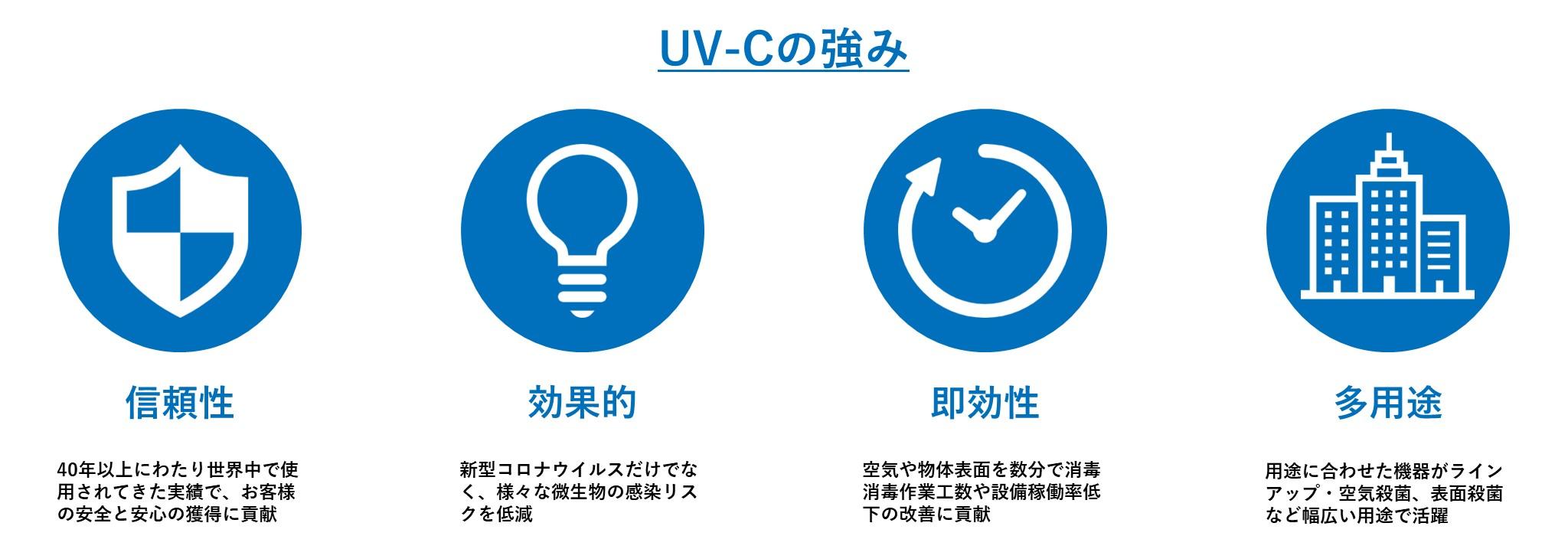
Demonstrated effectiveness of UV-C light source against COVID-19
The Boston University National Institute of Emerging Infectious Diseases demonstrated the effectiveness of Philips UV-C light sources in inactivating SARS-CoV-2, the virus that causes COVID-19.
As a result of verification, it was confirmed that SARS-CoV-2 was inactivated by 99% in 6 seconds with an integrated light intensity of 5 mJ/cm2. Based on the above results, it was confirmed that 99.9999% inactivation was achieved when the integrated light intensity for 25 seconds was set to 22mJ/cm2.
Philips UV-C sterilizer series
UV-C desk light
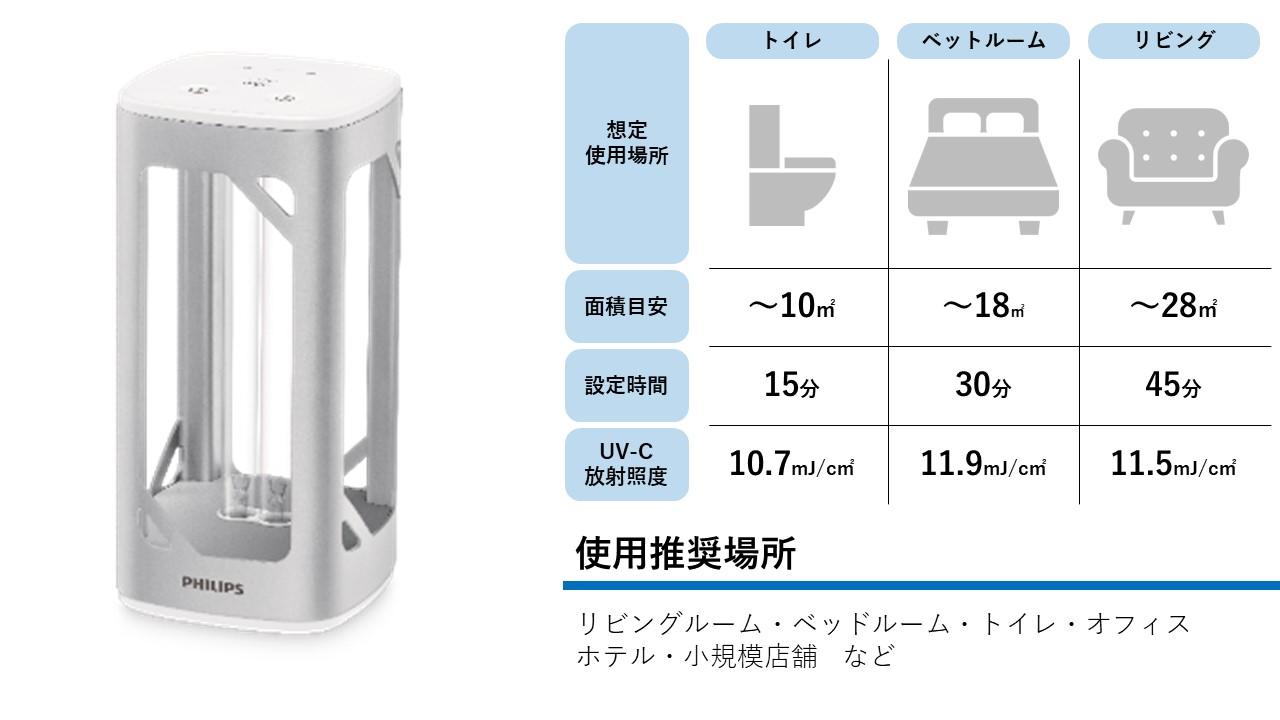
Tabletop UV-C germicidal lighting suitable for use in small shops, offices, and general households. The UV-C desk light emits UV-C directly and must be used unattended.
Equipped with safety-conscious functions such as a high-sensitivity motion sensor that prevents direct UV-C irradiation, a timer, and an audio operation guide.
The human sensor is designed so that when a person or pet enters the sensor detection range, it will return to the standby state or the lamp power will be forcibly cut off, and UV-C exceeding the standard will not be emitted outside the 5m radius. . The built-in timer can set the usage time according to the size of the living room.

UV-C indoor air sterilizer
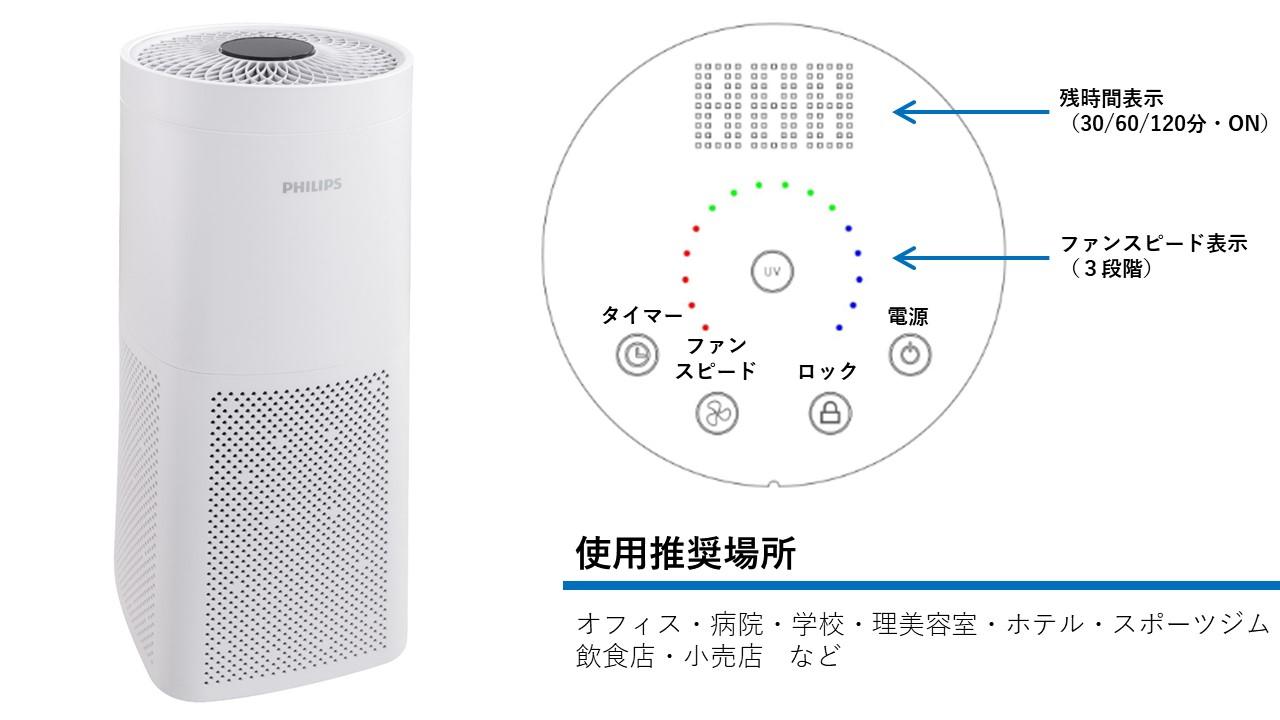
Room air is taken in from the air inlet at the bottom of the device, and clean air that has been sterilized with UV-C light is discharged from the air outlet at the top of the device. UV-C light does not leak outside and can be used safely 24 hours a day even in manned environments.
Since it can be used just by connecting it to an outlet, it does not take much time to install, and the simple interface allows you to easily set the timer (30/60/120 minutes/constant operation) and 3 levels of wind speed settings.
Field tests have confirmed that 98.0% or more of sterilization can be achieved in just two hours of operation in a room of approximately 80m3.

UV-C upper air sterilizer
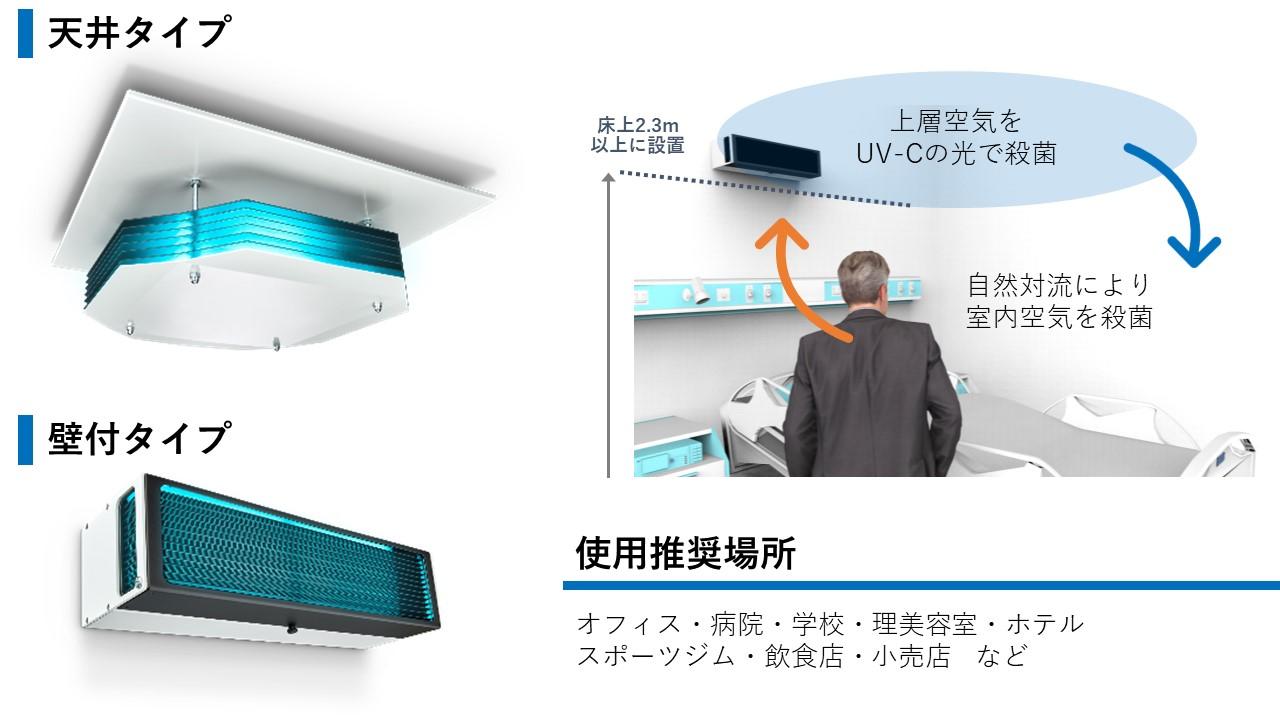
A UV-C sterilizer installed on the ceiling or wall to sterilize indoor air. The ceiling-mounted type emits UV-C light in four directions, and the wall-mounted type in one direction to sterilize the air in the upper layer, so it can be used at all times in places where people stay.
By using the natural convection of air to sterilize the entire room, there is no need for an electric fan and maintenance is not required. By installing it near the air outlet of the air conditioner or near the door, the air in the upper layer can be circulated more and the sterilization efficiency can be improved.
In a room with a ceiling height of 2.5 to 4.0m, a rough guideline is to install one unit per maximum of 50m2. (Left figure)
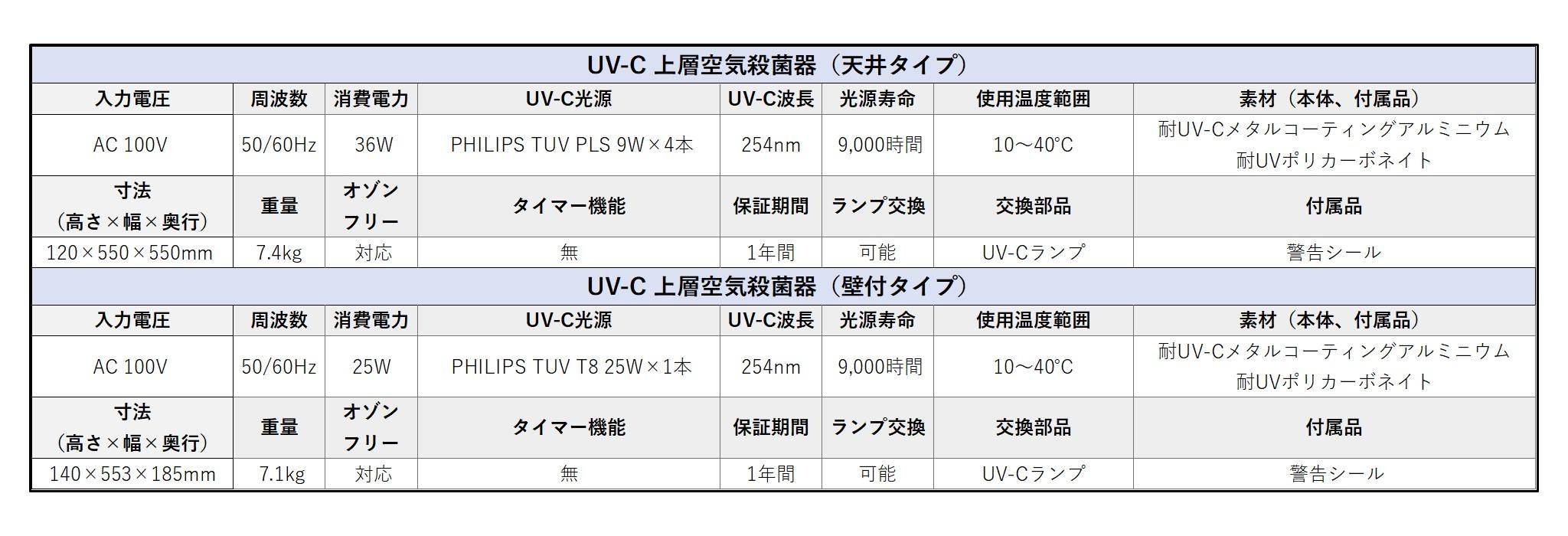
Case study
It is used in various places such as offices, commercial facilities, medical institutions, etc., both in Japan and overseas.
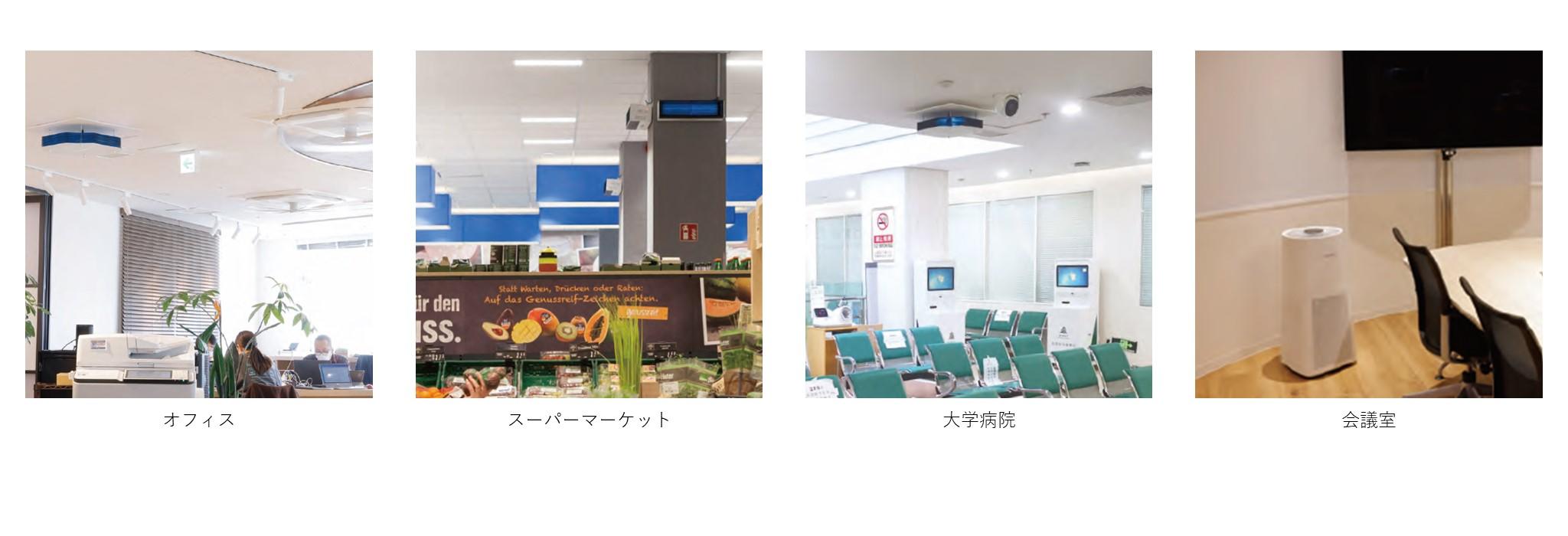
For safe use of UV-C germicidal lighting
● As with sterilization methods using chemicals, it is necessary to consider safety when using UV-C. UV-C light is harmful to living things such as humans, pets, and plants, and appropriate protective measures are required.
● Direct exposure to the skin may cause sunburn-like inflammation. Also, if you look directly at it, you may experience symptoms like keratitis, which may be accompanied by intense pain. Please do not use it on the human body at any time.
● In addition, long-term use of UV-C may cause discoloration of plastic materials and peeling of paint.
● Philips UV-C devices are equipped not only with appropriate UV-C light design, but also with multiple safety mechanisms as standard to minimize the risk of health hazards. Please read carefully and do not use it for any other purpose.
